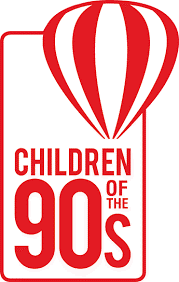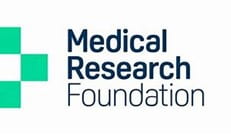Overview and aims:
Research shows that facing bad experiences early in life (such as physical and sexual abuse, and emotional neglect) increases the chances that a young person will self-harm. However we do not yet understand how this works. We know that the social environment (including the occurrence of adversity) can have an impact on the body’s internal working, such as inflammation and hormones, and that these things in turn are involved in suicide and self-harm. In this study, we aimed to investigate whether early bad experiences are associated with different biological processes (inflammation and puberty (stage and timing)) and explore whether these factors are, in turn, associated with self-harm in adolescence.
Our research also investigated whether associations between inflammation, puberty and self-harm are real, or whether they might be explained by other factors. We used a genetic epidemiology technique called ‘Mendelian Randomisation’ to investigate whether there was any evidence for a causal association between levels inflammatory markers (IL-6 and CRP) and self-harm.
We also looked at whether there are distinct types of self-harm. Some researchers have proposed that it may be useful to classify self-harm according to whether or not the person has suicidal ideas, and has self-harmed with the intention of ending their life. To help us understand this better, we aimed to study whether the genes of young people who self-harm differ according to whether or not they have harmed with suicidal intent.
What did we find?
 We used data from the Avon Longitudinal study of Parents and Children (ALSPAC) to study to investigate whether specific biological processes – such as immune system activation or timing of puberty – explain part of the relationship between adverse childhood experiences (ACEs) and self-harm in adolescents. We found a strong association between the number of ACEs experienced and adolescent self-harm. For each additional type of ACE, a young person was 11% more likely to self-harm at the age of 16, and 22% more likely to have self-harmed with suicidal intent. However, we did not find any evidence of a link going from adversities through inflammation to self-harm.
We used data from the Avon Longitudinal study of Parents and Children (ALSPAC) to study to investigate whether specific biological processes – such as immune system activation or timing of puberty – explain part of the relationship between adverse childhood experiences (ACEs) and self-harm in adolescents. We found a strong association between the number of ACEs experienced and adolescent self-harm. For each additional type of ACE, a young person was 11% more likely to self-harm at the age of 16, and 22% more likely to have self-harmed with suicidal intent. However, we did not find any evidence of a link going from adversities through inflammation to self-harm.
In addition, we investigated the relationship between inflammation and self-harm using genetically-informed methods (Mendelian Randomisation). We found no evidence of an association between IL-6 and self-harm, and some evidence that higher levels of CRP may be protective against self-harm. Our findings suggest conflicting evidence of a causal role of these two inflammatory agents in the aetiology of self-harm, suggesting that different inflammatory markers may have differential or no associations with self-harm in European populations
We also looked at timing of puberty (age at menarche and age at peak height velocity) as a potential mechanism linking ACEs and self-harm. Our findings suggest that both childhood adversity and early pubertal timing are risk factors for later self-harm in both males and females. However, we found no evidence that the effect of adversity on self-harm is mediated through earlier pubertal timing.
In a second study, we investigated whether there are clearly distinct types of self-harm. We found that although non-suicidal self-harm (NSSH) and suicide attempts (SA) are not discrete outcomes, there appears to be little overlap in their genes. We also looked at the genes contributing to different risk factors (such as mental health, personality, IQ and substance use) and found that some risk factors were similarly associated with NSSH and SA, whereas others appeared to be more specific. These results should be considered exploratory, due to the small sample size.
Project team:
- University of Bristol, UK: Becky Mars; Jon Heron; John Macleod; Kate Tilling and David Gunnell (PI)
- University of Oxford: Keith Hawton; Catherine Crane
- University College London: Glyn Lewis
Funders/Supporters
This study was funded by the Medical Research Foundation and the Medical Research Council
Publications and other outputs:
Russell AE, Heron J, Gunnell D, Ford T, Hemani G, Joinson C, Moran P, Relton C, Suderman M, Mars B. Pathways between early-life adversity and adolescent self-harm: the mediating role of inflammation in the Avon Longitudinal Study of Parents and Children. J Child Psychol Psychiatry. 2019 Oct;60(10):1094-1103. doi: 10.1111/jcpp.13100.
Russell AE, Ford T, Gunnell D, Heron J, Joinson C, Moran P, Relton C, Suderman M, Hemani G, Mars B. Investigating evidence for a causal association between inflammation and self-harm: A multivariable Mendelian Randomisation study. Brain Behav Immun. 2020 Oct;89:43-50. doi: 10.1016/j.bbi.2020.05.065
Russell AE, Joinson C, Roberts E, Heron J, Ford T, Gunnell D, Moran P, Relton C, Suderman M, Mars B. Childhood adversity, pubertal timing and self-harm: a longitudinal cohort study. Psychol Med. 2021 Mar 8;52(16):1-9. doi: 10.1017/S0033291721000611.
Russell AE, Hemani G, Jones HJ, Ford T, Gunnell D, Heron J, Joinson C, Moran P, Relton C, Suderman M, Watkins S, Mars B. An exploration of the genetic epidemiology of non-suicidal self-harm and suicide attempt. BMC Psychiatry. 2021 Apr 23;21(1):207. doi: 10.1186/s12888-021-03216-z.
Orri M, Russell AE, Mars B, Turecki G, Gunnell D, Heron J, Tremblay RE, Boivin M, Nuyt AM, Côté SM, Geoffroy MC. Perinatal adversity profiles and suicide attempt in adolescence and young adulthood: longitudinal analyses from two 20-year birth cohort studies. Psychol Med. 2022 May;52(7):1255-1267. doi: 10.1017/S0033291720002974.
Russell AE, Mars B, Wen CP, Chang SS, Gunnell D. Evidence for an association between inflammatory markers and suicide: a cohort study based on 359,849 to 462,747 Taiwanese adults. J Affect Disord. 2021 Feb 15;281:967-971. doi: 10.1016/j.jad.2020.10.047
Contact for further details: Becky.mars@bristol.ac.uk



